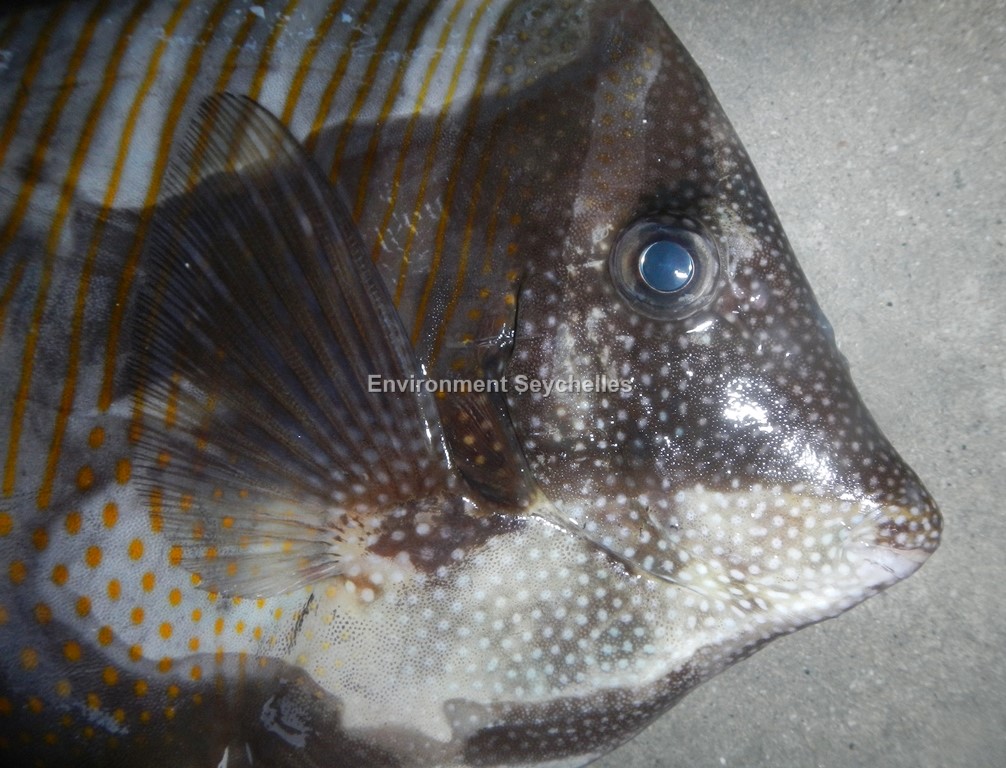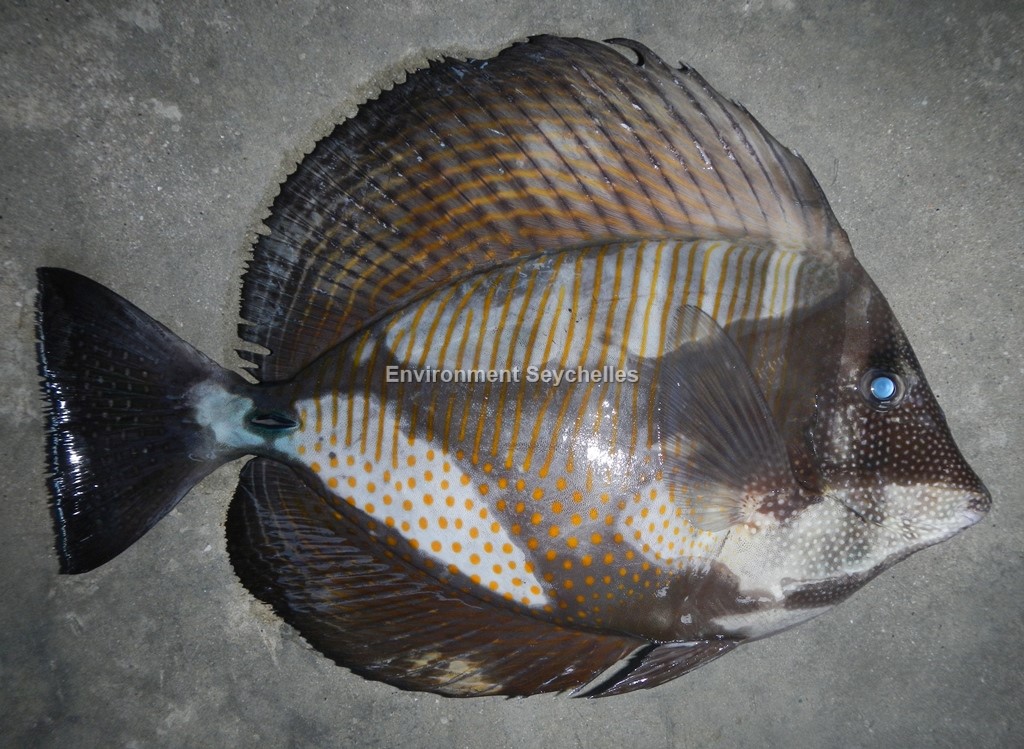Description:
Dorsal spines: 4; Dorsal rays: 27-31; Anal spines: 3; Anal rays: 22-24.
Light grey body with eight dark brown bars, each containing two or three orange-yellow lines that break into spots ventrally. Head with 2 dark brown bars and numerous
small pale yellow spots. Caudal fin truncate with small pale blue spots.
Size:
Maturity: Lm unknown. Range unknown. Max Length: 40cm TL
Habitat and Ecology:
Occurs in lagoon and seaward reefs (3-30m depth). Classified as a grazer, usually solitary or in pairs. Juveniles are solitary in sheltered inner reef areas.
Fishery Status:
This species is not protected or subject to fishery regulations. It is caught in the fish trap fishery, but is a rare component of the catch.
Notes:
The colour of the photo’d specimen has been altered by storage on ice.
References:
Froese, R. & D. Pauly. Eds. (2018). FishBase https://www.fishbase.de/summary/zebrasoma-desjardinii (19/10/18)
Myers, R. (2012). Zebrasoma desjardinii. The IUCN Red List 2012: e.T178024A1524628. http://dx.doi.org/10.2305/IUCN.UK.2012.RLTS.T178024A1524628.en. (19/10/18).
Randall, J.E. (2001). Surgeonfishes of Hawaii and the World. ISBN: 1-56647-561-9
Citation:
Nevill, J.E.G. (2019). Zebrasoma desjardinii, Indian sail-fin surgeonfish. Seychelles Seatizens. www.seatizens.sc. https://seatizens.sc/species/zebrasoma-desjardinii-bennett-1836/ (edited 17/06/22).



I truly appreciate this blog article.Much thanks again. Much obliged.
Very good blog.Really looking forward to read more. Keep writing.
Really enjoyed this article post.Really looking forward to read more. Cool.
I think this is a real great blog post. Cool.
Thanks a lot for the blog article.Really looking forward to read more. Really Great.
I appreciate you sharing this blog article.Thanks Again. Want more.
I cannot thank you enough for the blog post.Thanks Again. Awesome.